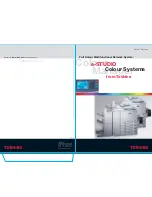
Chapter 14: Quality of Service
166
Section II: Advanced Operations
Replacing Priorities
The traffic class or flow group priority (if set) determines the egress queue
a packet is sent to when it egresses the switch, but by default has no
effect on how the rest of the network processes the packet. To
permanently change the packet’s priority, you need to replace one of two
priority fields in the packet header:
The User Priority field of the VLAN tag header. Replacing this field
relabels VLAN-tagged traffic, so that downstream switches can
process it appropriately.
The DSCP value of the IP header’s TOS byte (Figure 6 on page 131).
Replacing this field may be required as part of the configuration of a
DiffServ domain. See “DiffServ Domains” on page 167 for information
on using the QoS policy model and the DSCP value to configure a
DiffServ domain.
VLAN Tag User Priorities
Within a flow group or traffic class, the VLAN tag User Priority value of
incoming packets can be replaced with the priority specified in the flow
group or traffic class. Replacement occurs before the packet is queued, so
this priority also sets the queue priority.
DSCP Values
There are three methods for replacing the DSCP byte of an incoming
packet. You can use these methods together or separately. They are
described in the order in which the switch performs them.
The DSCP value can be overwritten at ingress, for all traffic in a policy.
The DSCP value in the packet can be replaced at the traffic class or
flow group level.
You can use these two replacements together at the edge of a DiffServ
domain, to initialize incoming traffic.
The DSCP value in a flow of packets can replaced if the bandwidth
allocated to that traffic class is exceeded. This option allows the next
switch in the network to identify traffic that exceeded the bandwidth
allocation.
Summary of Contents for AT-S63
Page 14: ...Figures 14 ...
Page 18: ...Tables 18 ...
Page 28: ...28 Section I Basic Operations ...
Page 58: ...Chapter 1 Overview 58 ...
Page 76: ...Chapter 2 AT 9400Ts Stacks 76 Section I Basic Operations ...
Page 96: ...Chapter 5 MAC Address Table 96 Section I Basic Operations ...
Page 114: ...Chapter 8 Port Mirror 114 Section I Basic Operations ...
Page 116: ...116 Section II Advanced Operations ...
Page 146: ...Chapter 12 Access Control Lists 146 Section II Advanced Operations ...
Page 176: ...Chapter 14 Quality of Service 176 Section II Advanced Operations ...
Page 196: ...196 Section III Snooping Protocols ...
Page 204: ...Chapter 18 Multicast Listener Discovery Snooping 204 Section III Snooping Protocols ...
Page 216: ...Chapter 20 Ethernet Protection Switching Ring Snooping 216 Section III Snooping Protocols ...
Page 218: ...218 Section IV SNMPv3 ...
Page 234: ...234 Section V Spanning Tree Protocols ...
Page 268: ...268 Section VI Virtual LANs ...
Page 306: ...Chapter 27 Protected Ports VLANs 306 Section VI Virtual LANs ...
Page 320: ...320 Section VII Internet Protocol Routing ...
Page 360: ...Chapter 30 BOOTP Relay Agent 360 Section VII Routing ...
Page 370: ...Chapter 31 Virtual Router Redundancy Protocol 370 Section VII Routing ...
Page 372: ...372 Section VIII Port Security ...
Page 402: ...Chapter 33 802 1x Port based Network Access Control 402 Section VIII Port Security ...
Page 404: ...404 Section IX Management Security ...
Page 436: ...Chapter 36 PKI Certificates and SSL 436 Section IX Management Security ...
Page 454: ...Chapter 38 TACACS and RADIUS Protocols 454 Section IX Management Security ...
Page 462: ...Chapter 39 Management Access Control List 462 Section IX Management Security ...
Page 532: ...Appendix D MIB Objects 532 ...
















































